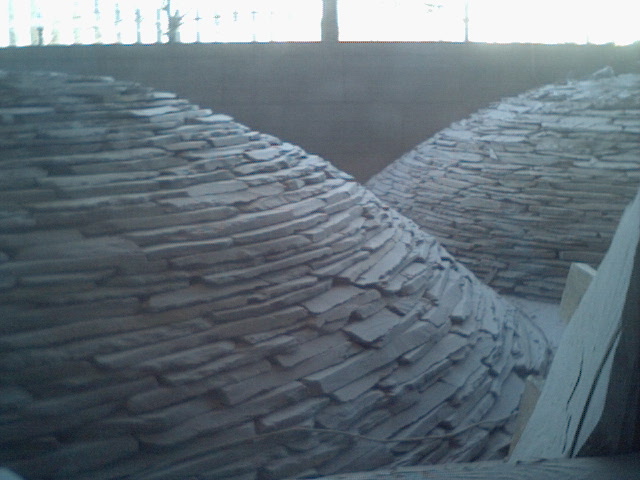
Andy Goldsworthy, "Roof," National Gallery of Art (East Building), under construction, 2/12/05
"Roof" is a series of interconnected structures constructed of Buckingham (Virginia) Slate by a team of "wallers," including four craftsmen from England who specialize in building the dry-stone walls that divide fields in the northern and western farmlands, especially Cumbria. These bee-hive-like domes are constructed by layering the slates in layers, each of which differs only slightly from the one before or after it. This mimics the way slate, itself, forms in layers, each of whose surface features resemble (with slight shifts in pattern) the features of the adjacent layer. In the foreground, a large piece of unworked slate reveals the "slating" Lévi-Strauss says one can find in episodic variations or character shifts encountered in sequences of related folk tales that retell the same deeply structured "myth." A more modern adaptation of this notion of the tales' "drift" from one version to another is Paul Zumthor's "mouvance," a term he invented to describe how Medieval narratives vary from earlier to later versions. Modern architectural design can exhibit the same "drift" of mouvance to produce new artifacts from old designs.
